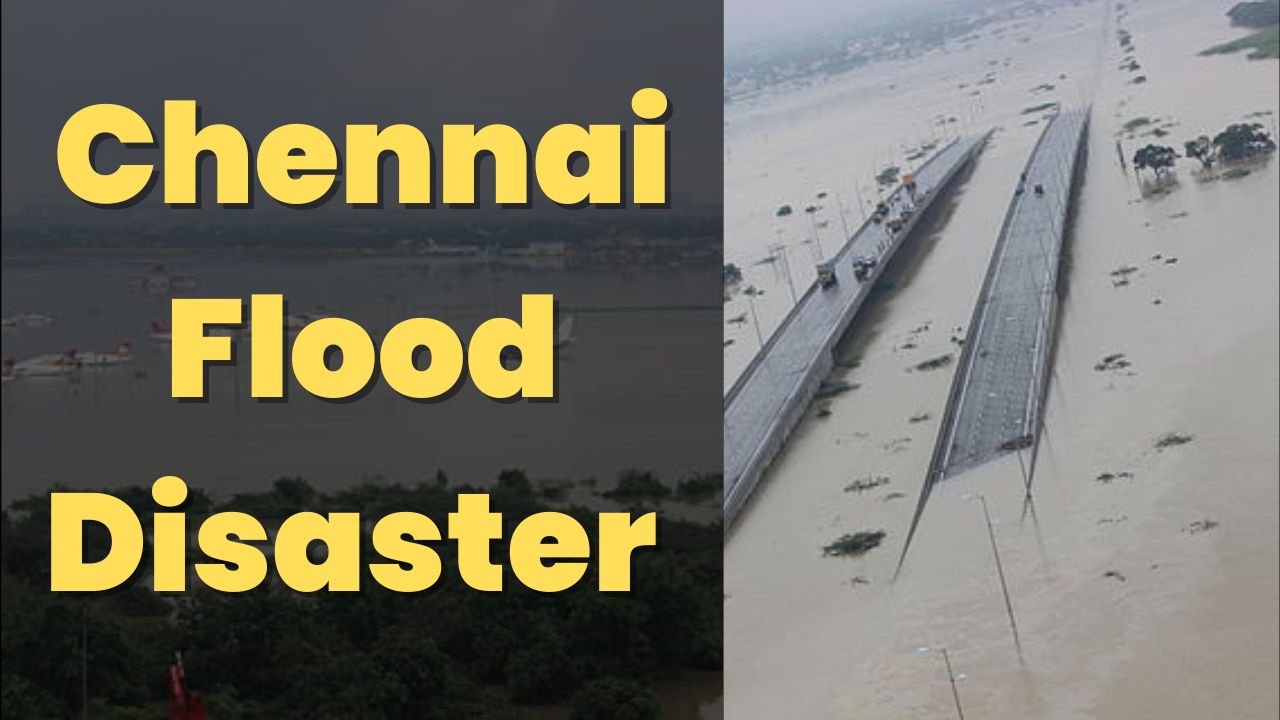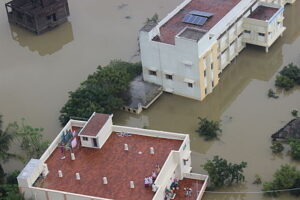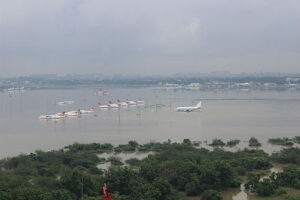Unraveling the Chennai Flood Disaster: A Tale of Resilience and Recovery
In 2015, Chennai faced one of the most devastating floods in its history, challenging the mettle of its residents. This blog post delves into the unfolding narrative of the Chennai Flood Disaster, exploring the city’s remarkable journey of resilience and recovery.

Background:
To understand the depth of the disaster, we must rewind to the monsoon season of 2015. Unprecedented rainfall led to overflowing rivers and inundated neighborhoods, exposing the city’s vulnerability to extreme weather events. Chennai, despite its rapid urbanization, was ill-prepared for the magnitude of the calamity that awaited.
The Unfolding Disaster:
As the rain relentlessly poured, the city found itself grappling with waterlogged streets, submerged homes, and paralyzed infrastructure. The scale of the disaster unfolded rapidly, catching residents off guard and highlighting the urgent need for coordinated action.
Impact on Residents:

The floodwaters spared no one, affecting people from all walks of life. Homes were destroyed, livelihoods disrupted, and a sense of despair settled over the city. Families were forced to evacuate, seeking refuge in relief camps, as the community braced itself for the long road ahead.
Government Response and Relief Efforts:
In the face of adversity, the government swiftly mobilized rescue operations and relief efforts. From deploying rescue teams to setting up temporary shelters, authorities worked tirelessly to provide immediate assistance. The coordination between local, state, and national agencies became a crucial lifeline for the affected population.
Community Resilience:
Amidst the chaos, the people of Chennai exhibited remarkable resilience. Communities came together, offering support to those in need. Acts of kindness, from sharing resources to providing emotional support, became the driving force behind the city’s collective strength. The spirit of unity emerged as a beacon of hope in the darkest hours.
Recovery and Rebuilding:

The aftermath of the flood marked the beginning of a challenging reconstruction phase. Residents, NGOs, and government bodies collaborated to rebuild homes, restore infrastructure, and revive the city’s spirit. Innovative solutions, such as rainwater harvesting initiatives and improved drainage systems, were implemented to prevent future disasters.
Conclusion:
The Chennai Flood Disaster stands as a testament to the resilience ingrained in the city’s fabric. From the initial shock to the gradual recovery, the journey reflects the indomitable spirit of its people. Through collective efforts, Chennai not only rebuilt itself physically but also strengthened the bonds that define its vibrant community.
Frequently Asked Questions
Q1: What exactly happened during the Chennai Flood Disaster in 2015?
A1: The Chennai Flood Disaster in 2015 was triggered by unprecedented rainfall, leading to severe flooding across the city. Rivers overflowed, streets were waterlogged, and neighborhoods were submerged, causing widespread devastation.
Q2: How did the flood impact the residents of Chennai?
A2: The flood had a profound impact on residents, affecting homes, livelihoods, and daily life. Many were forced to evacuate, seeking refuge in relief camps. Homes were destroyed, and the city faced significant disruptions in terms of transportation and infrastructure.
Q3: What was the government’s response to the disaster?
A3: The government responded swiftly by mobilizing rescue operations and relief efforts. Coordination between local, state, and national agencies was crucial in providing immediate assistance to those affected. Temporary shelters were set up, and rescue teams worked around the clock to ensure the safety of residents.
Q4: How did the community show resilience during and after the disaster?
A4: Chennai’s community displayed remarkable resilience by coming together during the crisis. People offered support in various forms, including sharing resources, providing emotional assistance, and participating in collective efforts to overcome the challenges posed by the disaster.
Q5: What were the key recovery initiatives undertaken after the flood?
A5: The recovery phase involved collaborative efforts between residents, NGOs, and government bodies. Reconstruction of homes, restoration of infrastructure, and the implementation of innovative solutions such as rainwater harvesting and improved drainage systems were key components of the recovery process.
Q6: Were there any long-term measures implemented to prevent future disasters?
A6: Yes, the city implemented long-term measures to enhance resilience. Initiatives included improved infrastructure, better urban planning, and awareness programs on disaster preparedness. These measures aimed to mitigate the impact of future extreme weather events.
Q7: How does the Chennai Flood Disaster reflect the resilience of the city’s people?
A7: The disaster showcased the indomitable spirit of Chennai’s residents. From the initial shock to the recovery phase, the community demonstrated unity, strength, and a collective determination to rebuild. The experience became a defining chapter in the city’s history of resilience.
Q8: What lessons can other communities learn from Chennai’s experience?
A8: Chennai’s experience emphasizes the importance of preparedness, community collaboration, and proactive measures in the face of natural disasters. The city’s journey offers valuable insights for other communities seeking to enhance their resilience and recovery strategies.
